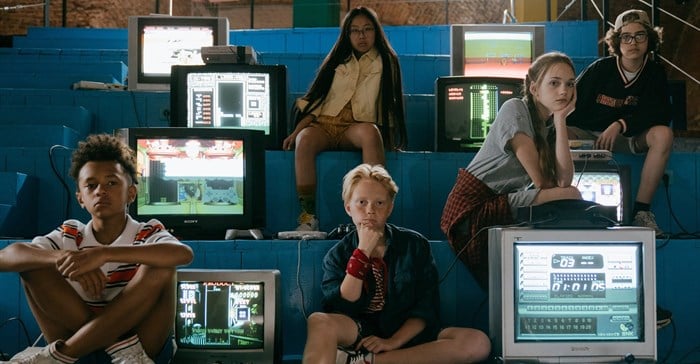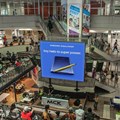Brands had just begun to understand the market of millennials as being at the forefront of the digital revolution, but they're now heading back to the drawing board. A new generational cohort (Gen-Z) has grabbed the spotlight and is set to be the most disruptive generation in history. Millennials no longer refers to "all the young people", they are a separate generation of young adults who by 2025 will earn 46% of income in the US alone. The generation after them - Centennials, Gen-Z, iGeneration, or Gen Tech - are the upcoming consumer market group that many brands are now shifting their focus to.
The average Gen-Zer received their first mobile phone at the age of 10 and many of them grew up playing on their parents' mobile devices. Raised in a hyper-connected world, the smartphone is their preferred method of communication and on average, they spend three hours a day on their mobile device.
ROI in the new generation
Currently between the ages of 5 and 25 years, this generation makes up over 15 million of South Africa’s population boasting a spending power of R35bn. Research into this youth market is therefore proving to be an increasingly important tool to connect with them.
Although millennials are tech-savvy, centennials are tech-innate. They have always had access to information on anything and can’t imagine life without it. Gen-Z typically spends a lot of time on social media. Broadcasters will succeed in providing on-demand content that adapts to any device and is easily accessible through web searches, as well as links in social media.
Gen-Z have a carefully tuned radar for being sold to and a limited amount of time and energy to spend assessing whether something’s worth their time.
Getting past these filters and winning their attention will mean providing them with engaging and immediately beneficial experiences. Although broadcasters have a need to sell advertising to raise revenue, they must customise their advertising in ways that speak to Gen-Z viewers as individuals. This powerful market refuses to be stereotypically lumped together as one homogenous group, so broadcasters need to identify the ideals, drives and influences of different segments of this cohort.
Campus TV has so far been successful in this. Broadcasting across several South African universities, its primary function is to be a strategic communication tool for universities to reach students. Campus TV also offers sustainable, third-stream revenue generation, with the perfect advertising platform for brands to target this market directly. What they have managed to do well is running integrated campaigns across multiple platforms including campus radio stations, social media, and live activations, each with unique ways for students to participate. This brings out the ultimate ROI.
Purposeful content with a cause
To reach the new age consumer, interaction is key. Consumers want to build a relationship with not only the content distributor but also the content creator. This demands a strong social media presence and dialogue with the consumer. If broadcasters are to succeed, they need to link themselves to or become influencers.
Influencer marketing is playing a massive role in how young people are making their buying choices and many students are now considering and recognising themselves as being influencers. Judging from the very many comments on social media platforms that influencers receive on their posts, we see how they take a leadership role in informing people’s opinions. Interaction and influence, therefore, play a big role in choosing content.
Consumers are demanding community-driven approaches to consumption. Being part of something bigger than themselves, participating in a group discussing content, and influencing the creation of content. We see this very much in gaming where people thrive to be part of a community.
However, when taking the community-driven approach, one must consider that Gen-Z in South Africa is still very diverse, with different socio-economic pressures that affect the youth in this geography. It is therefore essential that broadcasters not only understand the generational differences, but also the various socio-economic factors that further differentiate this market. Linking advertising to wider social issues proves effective. Studies show that Gen-Z is interested in racial, gender and income equality, as well as environmental issues. Standing up for these values is becoming a differentiator for brands.
Instant culture service delivery
Content is king! Historically, content and brand loyalty drove the success of broadcasters, but consumption methods have changed, and loyalty depends on immediate content availability with purpose and further engagement opportunities. Instead of 4 FTA TV channels and a pay-tv offer (starting also with 1 channel), the range of accessible content exploded.
One doesn’t need to wait for a programme to show on linear TV, it is instantly accessible and accommodates comments and interactions. The consumer gets easily drawn to another offer by choice since everything is instantly available. Genuine interest has to therefore be generated to create a community or fan group.
Furthermore, consumers want to know everything that is on offer before they decide to commit to a broadcaster or library subscription. Broadcasters should enable a convergent consumer experience across multiple touchpoints with a variety of business models spanning from free advertising-funded content up to transactional and multiple subscription-model based offers, transparent service delivery and preventative maintenance meeting the demands of the new generation.
CPE (customer premises equipment) devices are likely not as necessary anymore, as much of the service can be smoothly delivered via alternative digital platforms. Future-proofing platforms to accommodate alternative and creative business and consumption models, as well as methods, are key for success in the digital world.
Joseph Hundah 10 Jan 2019
However, most of the country is still at zero internet connection, or have GSM, edge, and 3G. Access to 4G and 5G is limited. This may pose challenges in streaming options should a broadcaster be completely operational only on digital platforms, and thus reduce ROI. A phased approach to digital adoption such as that of Multichoice is advisable.
Multichoice began with a unique value proposition as the first scrambled analogue in 1986, but now the broadcaster is device agnostic. Their decoder is merely a subscription, and all viewing of programs can be done on multiple devices.
New technology is typically first adopted by the youngest generation and then gradually by the older generations. Gen-Z (the youngest generation) is typically the highest user. This is why it is important to use this cohort as a test group to see how broadcasters will maintain or grow their audiences in the future.
It’s important to also note however that referring to a cohort simply by the age range gets complicated quickly because in 10 years, the priorities of each will have changed and marketing tactics will need to adjust accordingly. It takes a deep understanding of data and intelligent projections on future consumer behaviour and interest development to thoroughly guide broadcasters in their quest to dominate any market group and transition into the new constantly evolving digital age.
















































